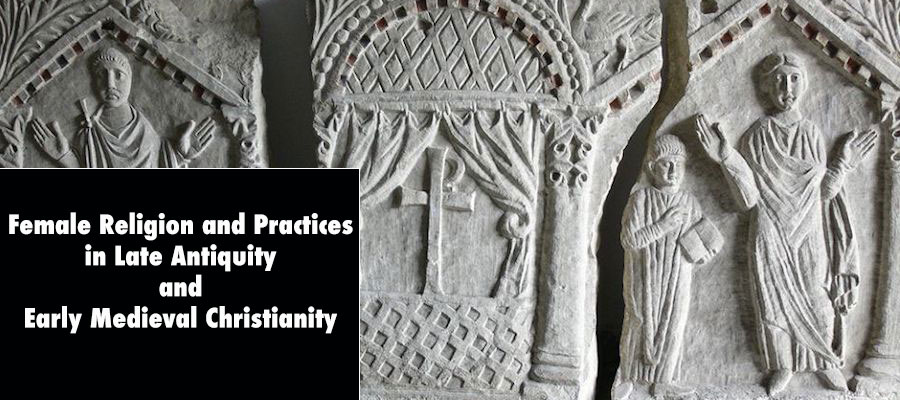This edited volume aims to bring an interdisciplinary view on how women were living and practicing Christianity from Late Antiquity to the Early Middle ages (from the III to XII century). The volume expects to bring together articles dealing with how women perceived and practiced Christianity in their own or shared spaces; how their practices differed from the norm, or were perceived by their peers or religious authorities; and how women can be perceived as agents of religious transformations.
The aim of the volume is to demonstrate the diversity of what could have been the female religious identity of Late Antique and Early Medieval individuals through their own practices (as perceived by others or described by themselves). Therefore, the book will focus on the religious experience of lay and religious women.
Possible approaches:
- Prescriptions for female behaviour from religious rules and ecclesiastical text: how a women should behave in the Church, what a virtuous Christian women should and should not do;
- Female heretics: the role of women in heresies (Priscillianism, Montanism, Manichaeism, ecc.);
- The space and role of women in private religion;
- Female spaces and places of cult;
- Female iconography and material culture related to Christian practices (everyday objects, epigraphy, ecc);
- Female Christian burials, funerary practices and their social and cultural meanings;
- Female martyrs and hagiography;
- The involvement of women in Christian practices: their presence in Mass, preaching as a women, female priesthood, women and the cult of saints and martyrs (in early Christianity women were often associated with these cults and were reputed as responsible for their excesses), women pilgrims;
- Unorthodox female practices as perceived by Christian authorities and their condemnation: magic, poisoning, curing practices, ecc;
- Hybrid practices (Christian practices that incorporated influences from other religions).
Accepted abstracts will be part of a book proposal. Even though a preliminary draft of the book received a positive feedback from the editorial board, an official proposal still need to be sent. Therefore, the book will need to receive an official thumbs up in order to really happen.
Submission of accepted chapters, of 7000-9000 words including bibliography, are provisionally anticipated for Late Summer-Early Autumn 2023.
